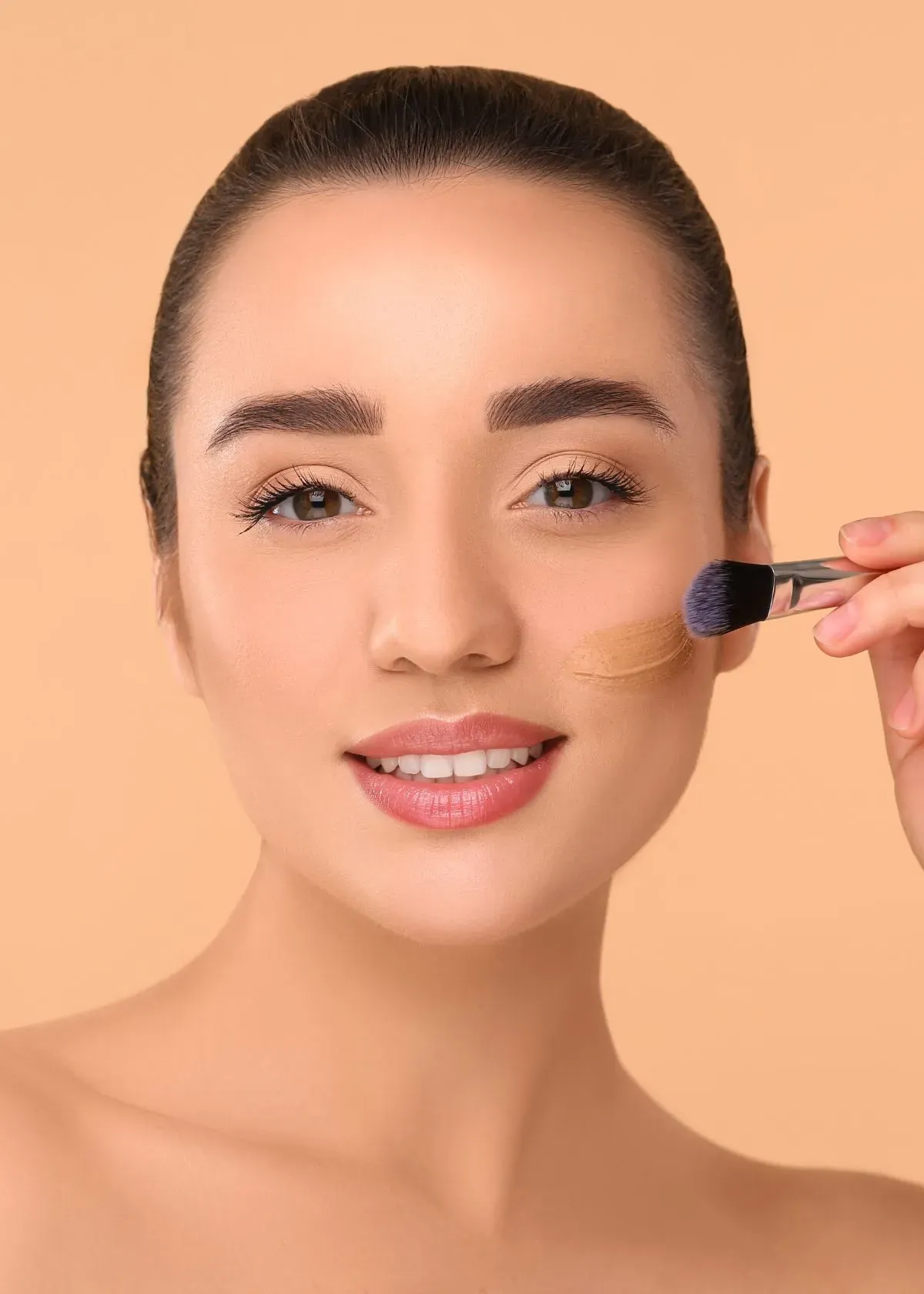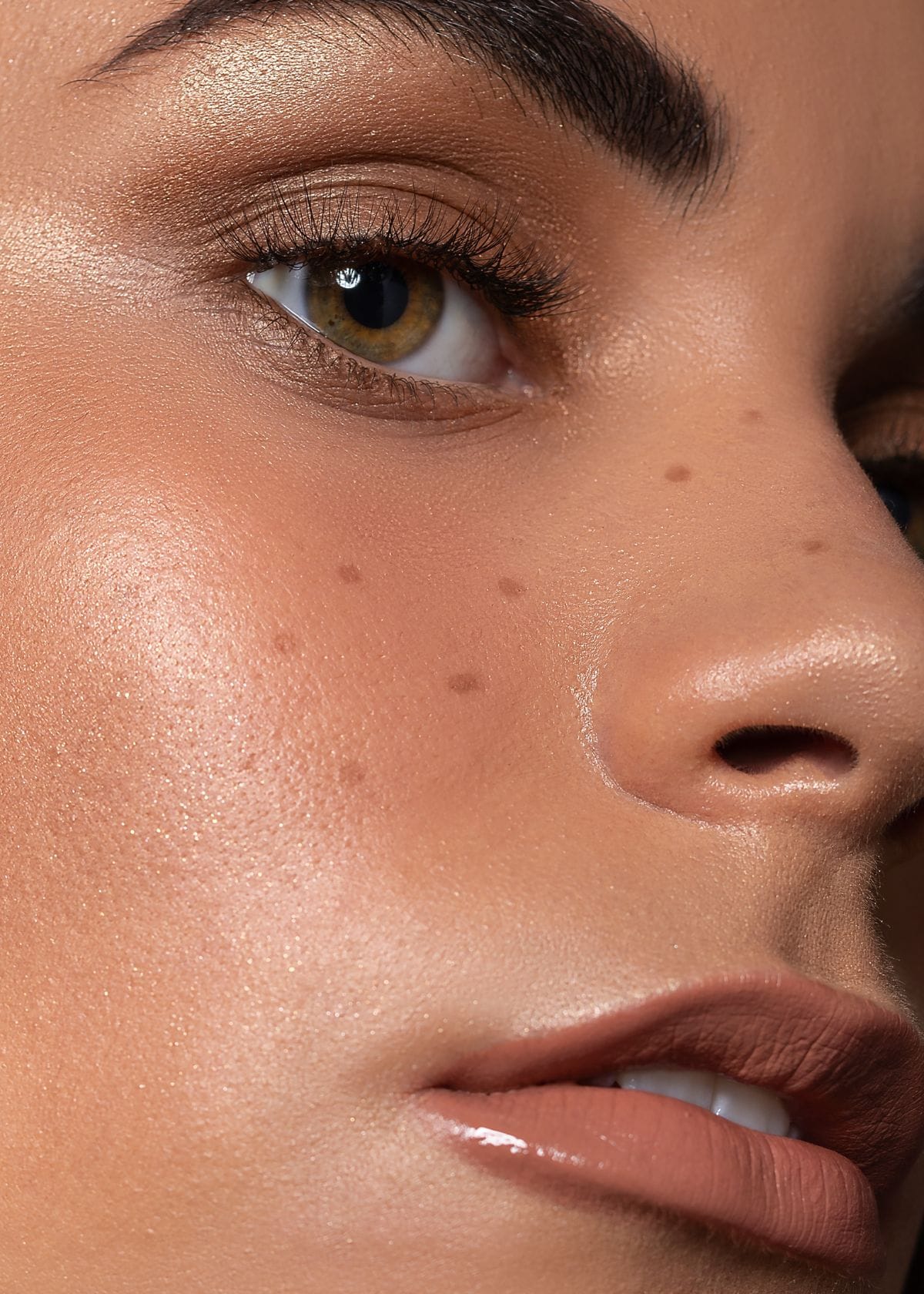Dealing with uneven skin texture can turn the quest for a flawless makeup application into a real challenge. I completely understand how disheartening it is when your go-to liquid foundation seems to magnify every tiny flaw. However, there's no need to lose hope!
After pouring over research and trying out various products and techniques, I've uncovered some game-changing strategies to navigate the trials of bumpy skin and achieve that coveted smooth skin look.
In this article, we'll explore prep work and savvy application tips that your makeup artist won't tell you. But they will revolutionize your approach to foundation. Honestly—the transformation lies in a few deceptively simple adjustments!
Key Takeaways
- Choose foundations with light-diffusing properties and hydrating ingredients like hyaluronic acid to create a smoother appearance on textured skin.
- Use the right tools, like a damp makeup sponge or dense brush, to apply foundation using gentle tapping and buffing motions for an even layer without emphasizing texture.
- For areas that need more coverage, build up a foundation in thin layers and strategically place concealer directly on bumpy spots before blending well.
- Set your foundation with a translucent powder to minimize shine and ensure it stays in place all day, then finish off by adding blush for color and highlighter for a subtle sheen.
- Regularly exfoliate skin and use a primer suited to your skin type as part of the preparation process before applying makeup.
What is Bumpy Skin?
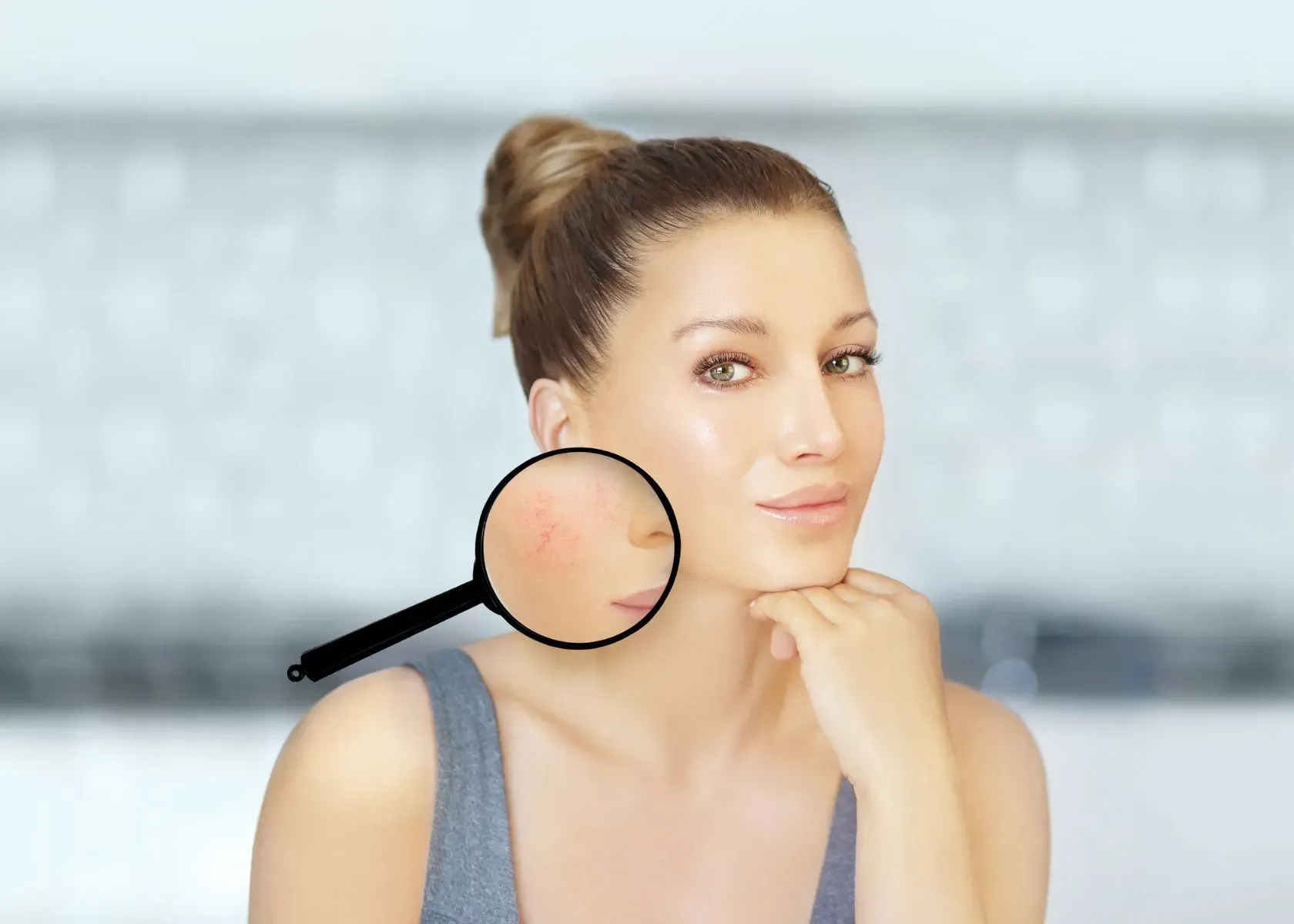
Bumpy skin refers to a surface that isn't completely smooth, feeling bumpy or uneven when you touch it. This texture can be due to a buildup of dead skin cells, leading to flaky patches and bumps across your complexion.
Often, dryness is the culprit behind this rough feel because your skin doesn't shed these cells as effectively without enough moisture.
I have learned proper preparation is key to getting that flawless foundation finish on textured skin like mine. Exfoliating helps remove those stubborn dead cells while priming creates an even base—two steps crucial for concealing any imperfections in the texture.
Choosing the Right Foundation for Bumpy Skin
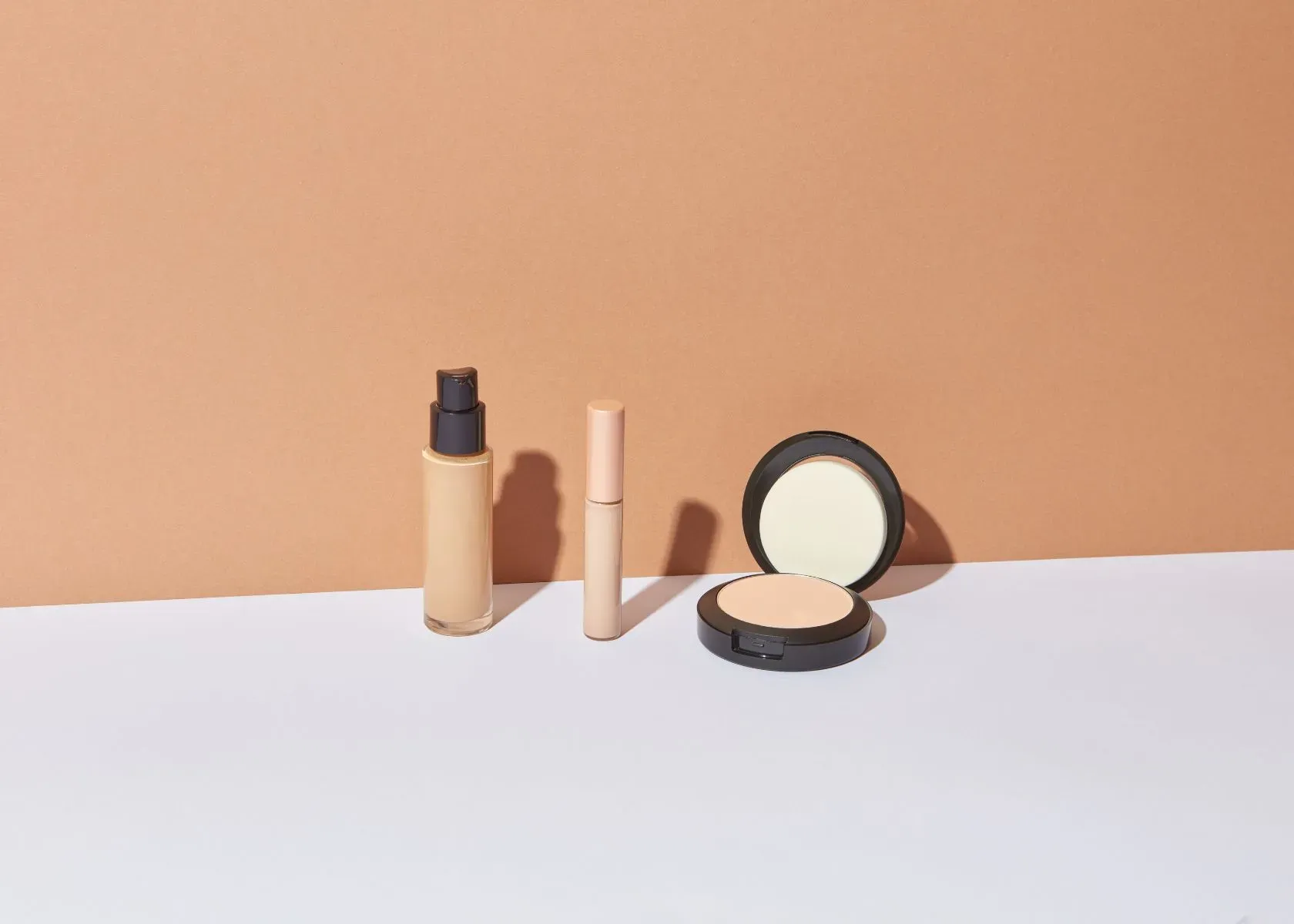
When it comes to bumpy skin, choosing the right foundation is key. Look for formulas with light-diffusing properties and ingredients like hyaluronic acid for a smoother finish. Additionally, color matching is crucial for a seamless look that camouflages skin imperfections.
To achieve a smooth foundation application on bumpy skin, consider the following recommended formulas and ingredients:
- Look for oil-free and non-comedogenic foundation formulas to avoid exacerbating texture issues.
- Opt for silicone-based foundations, which can create a smooth finish and fill in uneven textures.
- Consider foundations infused with hyaluronic acid to help hydrate dry patches and minimize the appearance of bumps.
- Seek foundations containing light-reflecting particles or luminescent pigments to create an illusion of smoother skin texture.
- Choose foundations with blurring properties, such as soft-focus powders or optical diffusers, to disguise uneven skin texture and large pores.
- Prioritize foundations enriched with skincare ingredients like vitamins C and E, which can help improve the overall condition of textured skin while providing coverage.
- Consider foundation formulas for dry skin, often containing moisturizing agents to prevent cakey or flaky makeup application.
- Explore mineral-based foundations that offer buildable coverage without settling into fine lines or emphasizing rough skin texture.
- Look for foundations with a lightweight, breathable consistency that allows for comfortable all-day wear without accentuating bumpy areas.
How to color match for best results
Selecting the right foundation shade for textured skin can be crucial in achieving a smooth and natural look. I always start by identifying my warm, cool, or neutral undertone. This helps me narrow my options to find a foundation that seamlessly matches my skin tone.
Additionally, considering specific concerns like redness or uneven pigmentation can guide me in choosing a color-correcting foundation to even out the overall skin tone.
Equally important is testing the foundation on your jawline in natural light to ensure an accurate match. Blending a small amount of foundation along the jawline and checking to see if it seamlessly blends into your neck allows you to avoid any visible distinction between your face and neck.
Preparing Your Skin for Foundation

The key to get a smoother appearance lies in proper exfoliating and hydration. Your moisturized skin will win half the battle! So, if you are struggling with rough texture, you need to include moisturizer and exfoliator in your makeup routine.
Exfoliating to create a smoother canvas
Exfoliation is essential to create a smoother canvas for foundation on bumpy skin. Exfoliating helps to remove dead skin cells and smooth out the surface, allowing the foundation to sit more evenly. Here are some tips for exfoliating:
- Gently massage a chemical exfoliant containing alpha hydroxy acids (AHAs) or beta hydroxy acids (BHAs) onto the skin to dissolve and slough off dead skin cells.
- Avoid harsh physical exfoliants that can be too abrasive and accentuate texture issues.
- Use a gentle scrub with fine particles to buff away rough patches without irritating.
- Consider using a gentle face brush or cleansing device to remove dead skin cells.
Using a primer to fill in pores and texture
After a light exfoliation to create a smoother canvas, the next step is using a primer to fill in pores and texture. Choosing a mattifying or pore-minimizing primer can help create an even surface for foundation application.
Look for primers with ingredients like silica or dimethicone, which can smooth out uneven skin texture and minimize the appearance of pores.
Gently patting the primer into areas with larger pores and uneven texture can help create a more uniform base for your foundation, ensuring a smoother and more flawless finish.
Applying Foundation for a Smooth Finish
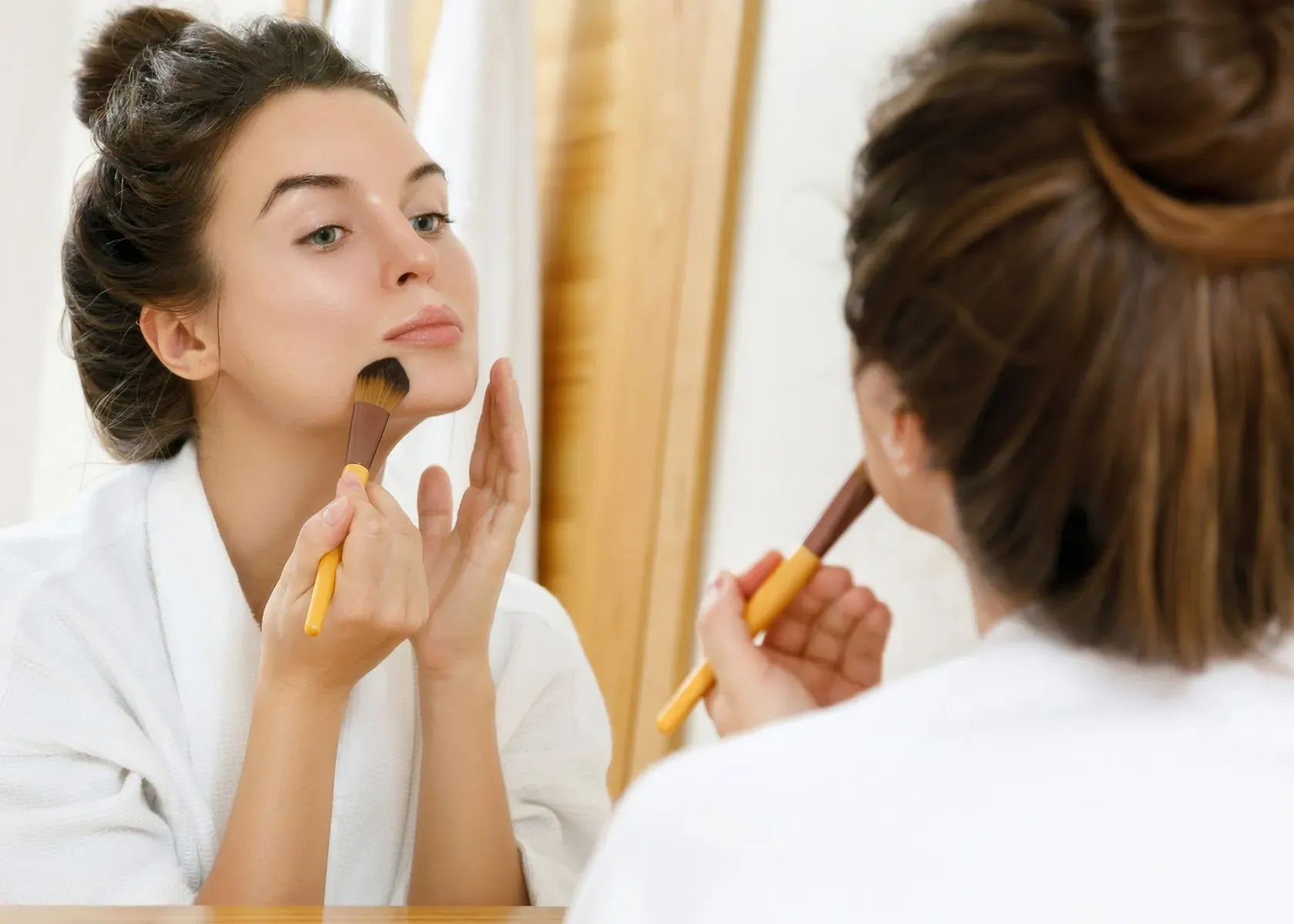
Using a damp makeup sponge or brush, blend the foundation into your skin using gentle tapping and buffing motions. Start from the center of your face and work outwards to ensure even coverage without emphasizing texture. Layer on more foundation only where needed for a seamless, natural finish.
To achieve a smooth and flawless foundation look on bumpy skin, it's essential to use the right tools and techniques. Here's how:
- Use a damp beauty blender or makeup sponge to gently press and bounce the foundation onto the skin. This method helps to blend the foundation seamlessly while minimizing the appearance of bumps and uneven texture.
- Opt for a dense, flat-top foundation brush to buff the product into the skin using circular motions. The bristles will help smooth the foundation and create an even finish.
- Employ a stippling brush with light tapping motions to build coverage in specific areas without emphasizing texture or creating a cakey appearance.
- Consider using a clean fingertip to lightly pat and blend foundation in delicate areas around the nose or under the eyes, where brushes or sponges may not provide enough precision.
- Experiment with different application techniques, such as gradually starting with thin layers and building coverage, focusing on problem areas while keeping a light touch for an even result.
Layering for buildable coverage
Layering a foundation for buildable coverage allows the gradual removal of any uneven texture or blemishes. By starting with a thin layer of foundation, you can achieve a more natural look while addressing areas needing extra coverage.
Building the product in light layers also helps prevent the skin from feeling weighed down or looking cakey. Additionally, blending each layer thoroughly ensures a smooth and seamless finish without accentuating any bumps or dry patches on my skin.
Finishing Touches for a Flawless Look
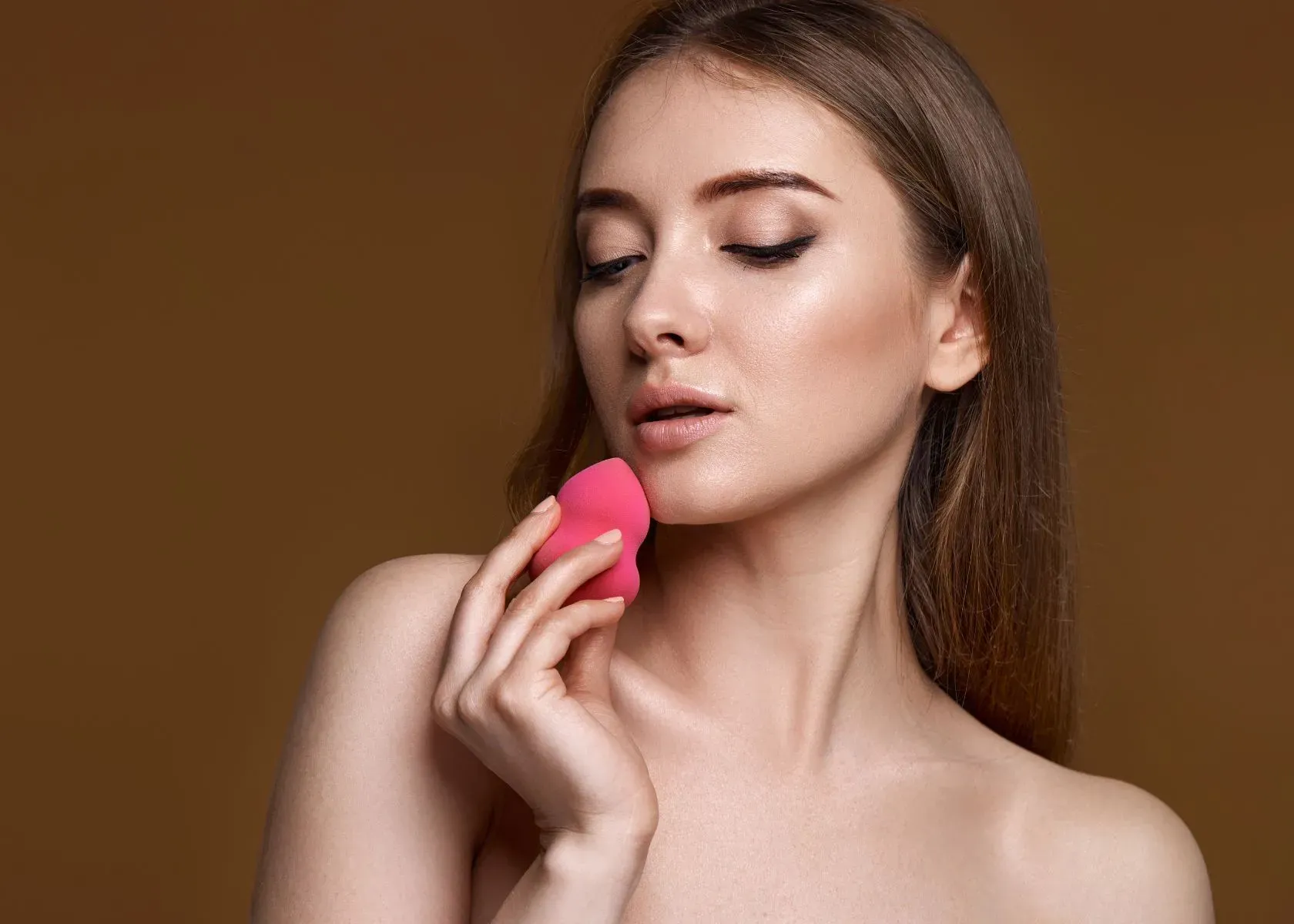
To ensure long-lasting wear for your foundation on bumpy skin, start by gently pressing a clean tissue or blotting paper over the face to absorb any excess oil without disturbing the makeup. Then, use a finely milled translucent setting powder to set the foundation in place and minimize shine.
Blending a natural flush onto the cheeks with a light, buildable cream or powder blush can bring life to the complexion. Look for blushes with finely milled powders and soft pigments that blend seamlessly on bumpy skin, avoiding emphasizing texture.
End by using a setting spray to settle in the makeup and avoid a textured appearance for a few hours.
How to Make Foundation Look Smooth on Bumpy Skin - FAQs

How do you make foundation look smooth on bumpy skin?
To make the foundation look smooth on bumpy skin, create a smooth makeup base with products suited for dry or textured skin, and apply blending techniques to apply the foundation evenly.
What are some tips for applying foundation to avoid cakey makeup?
To avoid cakey makeup, apply thin layers of foundation and concealer where needed, focusing particularly on areas with texture or large pores, and blend well for a natural look.
Can makeup cover the texture of my skin completely?
Makeup can help conceal textured skin when applied correctly using tips like moisturizing your face first, using primers designed to fill in uneven skin, and choosing cosmetics that cater specifically to bumpy textures.
Conclusion
Understanding bumpy skin and choosing the proper foundation are crucial steps. Preparing your skin with exfoliation and primer lays a smooth base for foundation application.
Techniques like stippling or pressing can effectively blend foundation for a flawless finish. These practical tips can lead to significant improvement in creating smooth makeup based on bumpy skin.
Armed with these strategies, you're ready to achieve a beautifully smooth and natural-looking foundation every time!
References
- Gloss, I. (2023, August 22). How do you foundation? Into the Gloss. https://intothegloss.com/2023/08/how-to-make-your-makeup-look-smooth/
- Valenti, L., & Noble, A. (2023, November 18). How to Apply Foundation? 11 Expert-Approved Ways to Make it Look Like Second Skin. Vogue. https://www.vogue.com/article/how-to-apply-foundation-skincare-tips-from-makeup-artists-violette-no-makeup-makeup
- How to apply foundation on textured skin | Makeup.com by L’Oréal. (2022, September 1). makeup.com. https://www.makeup.com/makeup-tutorials/face/how-to-apply-foundation-on-textured-skin
Learn More About Other Related Topics of Makeup Foundations
